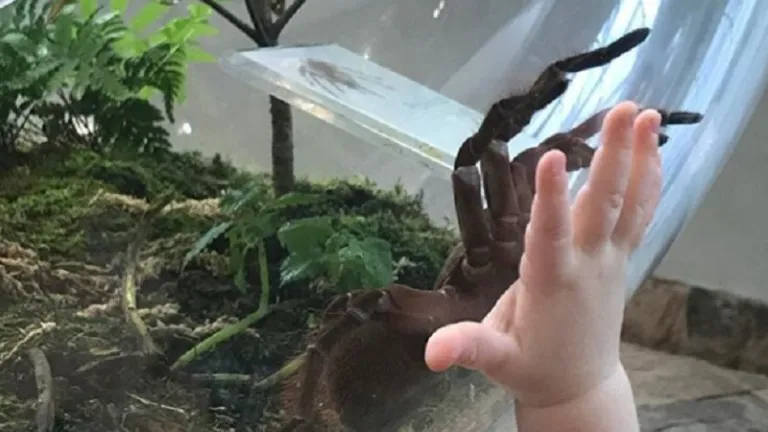What is the Goliath Tarantula
The Goliath Tarantula (Theraphosa blondi) is, without a doubt, one of the most fascinating and awe-inspiring creatures in the arachnid world. This behemoth of a spider holds the title of the world’s largest spider by mass, and its imposing presence has captivated the imaginations of scientists, pet enthusiasts, and nature lovers alike. Native to the rainforests of South America, the Goliath Tarantula is a true marvel of nature, showcasing a remarkable combination of size, strength, and unique adaptations. Understanding its characteristics offers a glimpse into the fascinating world of invertebrates and the remarkable diversity of life on Earth. These spiders are not only impressive due to their size, but also due to their interesting life cycle and behavior, which make them a captivating subject of study and admiration.
Size and Appearance
The Goliath Tarantula’s sheer size is its most striking feature. With a leg span that can reach up to 12 inches (30 cm) and a body length of over 4 inches (10 cm), this spider is larger than many dinner plates. Weighing in at over 6 ounces (170 g), some specimens can even tip the scales at over 8 ounces. The Goliath Tarantula’s body is covered in dense, reddish-brown hairs, which give it a furry appearance. These hairs provide both insulation and sensory functions. Their chelicerae, or fangs, are impressively large and powerful, capable of injecting venom to subdue prey. Their massive size and intimidating appearance are a testament to their dominance in their natural habitat. This giant spider is truly an impressive sight, especially when you consider its size and overall appearance.
Habitat and Distribution
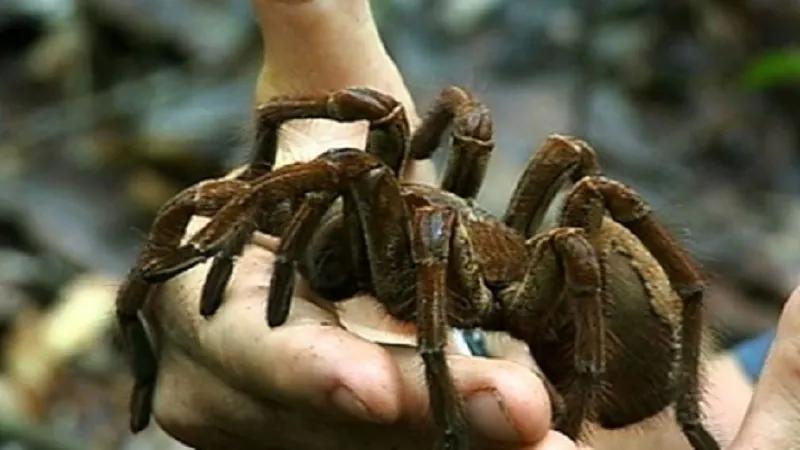
Goliath Tarantulas are found in the rainforests and swampy areas of northern South America. Their natural habitat includes countries such as Brazil, Venezuela, Guyana, Suriname, and French Guiana. These spiders prefer to live in burrows, which they construct in the ground, often near swamps or other moist environments. Their burrows provide shelter from predators and the elements. The humid and warm climate of their habitat is essential for their survival, as they require a consistent level of moisture to thrive. The Goliath Tarantula’s distribution is limited to specific geographical areas, making them a relatively rare sight outside of these regions. The habitat plays a crucial role in providing the necessary food and shelter for these amazing creatures.
Diet and Feeding Habits
As apex predators, Goliath Tarantulas have a diverse diet. They are opportunistic hunters and will consume a variety of prey, including insects, worms, and even small vertebrates. Their diet can include frogs, lizards, and occasionally, small snakes and birds. They are ambush predators, waiting patiently in or near their burrows for unsuspecting prey to come within striking distance. Once they detect movement, they swiftly pounce on their target, injecting venom through their fangs to immobilize it. They then use their chelicerae to grind and consume their prey, often leaving behind only the indigestible parts. Their diet varies depending on the availability of food in their habitat, making them adaptable and efficient hunters in their environment. Goliath Tarantulas require a diet rich in protein and nutrients.
Behavior and Temperament
While imposing in size, Goliath Tarantulas are generally not aggressive towards humans. However, they can be defensive if they feel threatened. They are typically nocturnal, being most active during the night when they come out to hunt. When disturbed, they may exhibit defensive behaviors, such as raising their front legs, hissing, or flicking urticating hairs (small, irritating hairs) from their abdomen towards the perceived threat. The Goliath Tarantula’s behavior is largely influenced by its environment and its instincts as a predator. They are solitary creatures, with the exception of mating. They are often shy and prefer to remain hidden in their burrows. Understanding their behavioral patterns can help ensure both their well-being and the safety of those who interact with them.
Unique Defense Mechanisms
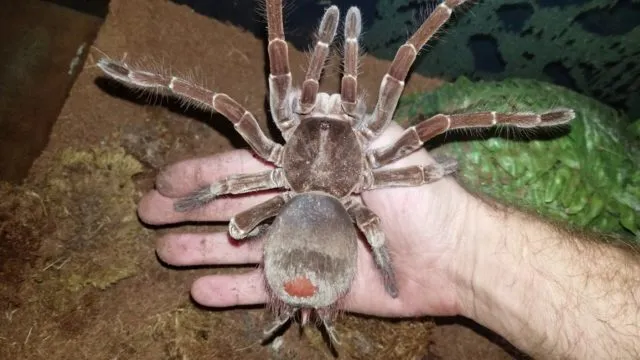
Besides their impressive size and potent fangs, Goliath Tarantulas employ several unique defense mechanisms. One primary defense is the urticating hairs located on their abdomen. These hairs are barbed and can be flicked towards a threat, causing intense itching and irritation upon contact. The spiders use this as a first line of defense against predators, discouraging them from further interaction. They also produce a hissing sound when threatened, a warning signal that indicates their readiness to defend themselves. This hissing is created by rubbing their legs together, creating a noise that serves as a deterrent. In addition to these defenses, they also have powerful chelicerae and venom, used to subdue prey, but can also be used for defense. These defense mechanisms show how they are adapted to survive in their natural habitat.
Goliath Tarantula as Pets
Caring for a Goliath Tarantula
Keeping a Goliath Tarantula as a pet requires careful planning and a good understanding of their needs. They require a spacious terrarium with appropriate substrate, such as a mix of peat moss, vermiculite, and soil, to allow them to burrow. The terrarium should also include a water dish and hiding places, such as a piece of cork bark. Maintaining the correct temperature and humidity levels is crucial. The ideal temperature range is typically between 75-85°F (24-29°C), with humidity levels around 75-85%. Regular feeding with appropriate prey items, such as crickets and roaches, is essential. It’s important to research and ensure you can provide for the complex needs of this fascinating creature. They are not for beginners due to their size and potential for defensive behavior, requiring experience in tarantula care. Their care requires dedication and providing a suitable environment that allows them to thrive.
Handling and Safety Precautions
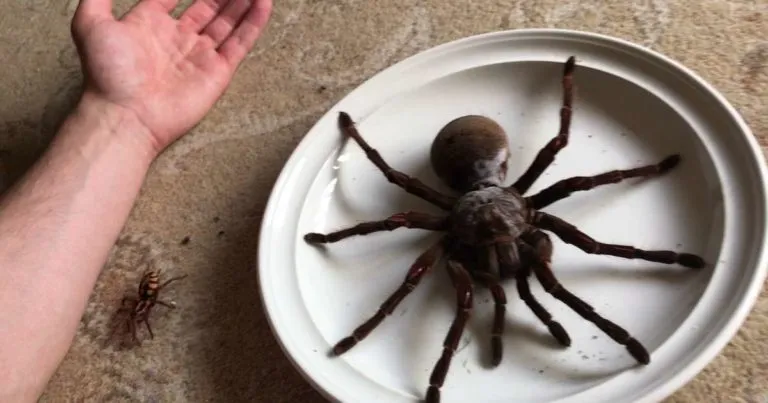
Handling a Goliath Tarantula should be done with extreme caution, if at all. Due to their size and potential for defensive behavior, it is generally recommended to avoid handling them unless absolutely necessary. If handling is required, it should be done gently and slowly, preferably while the spider is in a secure location like a terrarium. Always be aware of the spider’s posture and watch for signs of stress or defensiveness, such as raising its front legs or flicking urticating hairs. If bitten, seek immediate medical attention due to the size and strength of their fangs. Proper safety measures should be followed, and it is essential to understand the risks involved. Remember, observing these creatures is best done within their habitat, allowing you to witness their behaviors from a safe distance.
Common Health Issues
Like all living creatures, Goliath Tarantulas can be susceptible to certain health issues. Parasitic infestations, such as mites, are a common problem and can be treated with appropriate veterinary care. Respiratory infections can also occur, often due to improper humidity levels or poor ventilation. Another significant concern is the possibility of injury during molting, a process where the tarantula sheds its exoskeleton to grow. During molting, the spider is vulnerable, and it is critical to maintain a stable environment. Providing a clean and stress-free environment is the best way to prevent health issues. Regularly monitoring the spider’s behavior and appearance is essential for early detection of any health problems. Seek advice from an experienced arachnid veterinarian if you suspect any health concerns.
Interesting Facts about Goliath Tarantulas
Lifespan of a Goliath Tarantula
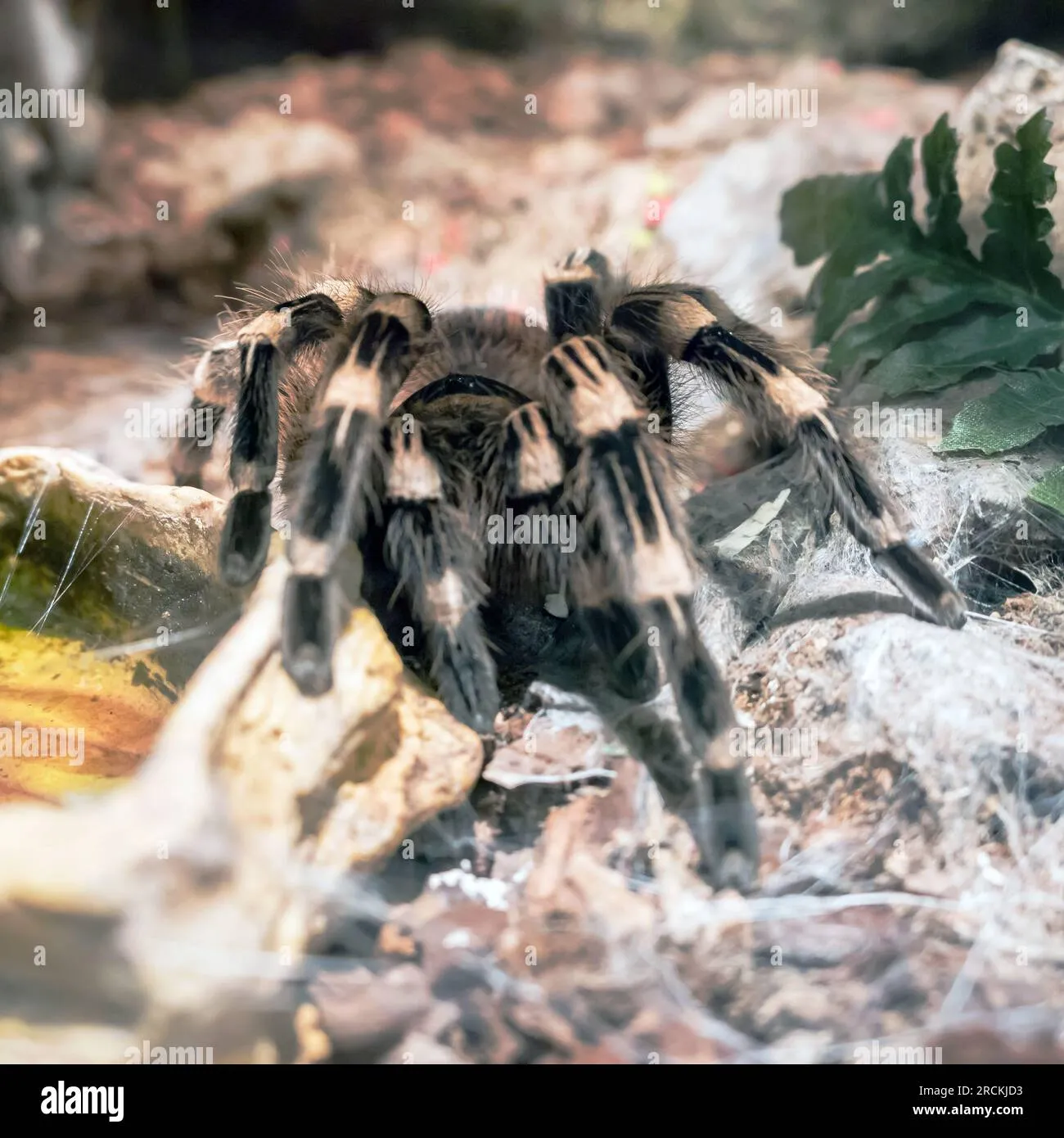
Goliath Tarantulas have a relatively long lifespan compared to many other spider species. Females can live for up to 15 to 25 years in captivity, while males typically have a shorter lifespan of about 3 to 6 years. The difference in lifespan is related to the males’ role in reproduction. After mating, males often die. Several factors affect the lifespan, including care, diet, and overall health. Providing proper care, including a suitable habitat, appropriate feeding, and regular health checks, helps extend their lifespan. While the lifespan of a tarantula can vary, providing the best possible environment helps support a long and healthy life.
Reproduction and Life Cycle
The reproduction of Goliath Tarantulas is a fascinating process. After the male tarantula reaches maturity, it will seek out a female. The male will typically create a sperm web and then transfer the sperm to a specialized structure on his pedipalps. He will then approach the female, and if she accepts him, mating can occur. After mating, the female will lay eggs in an egg sac. The number of eggs can vary, but typically, the female Goliath Tarantula can lay between 50 to 200 eggs. The egg sac is carefully guarded by the female until the spiderlings hatch. The spiderlings will then go through several molts as they grow, reaching their adult size after a few years. The entire life cycle from egg to adult can take several years, depending on various environmental factors.
